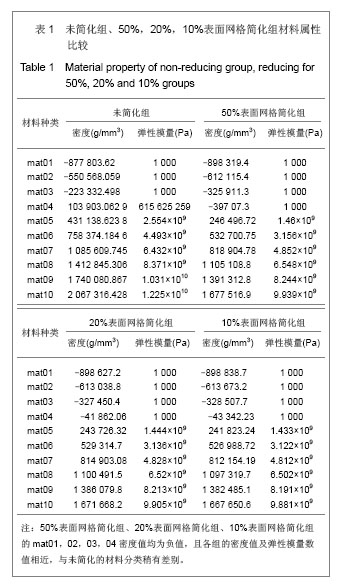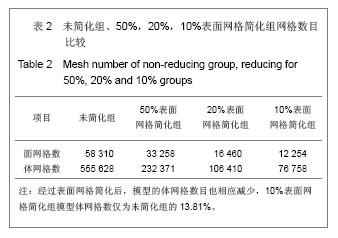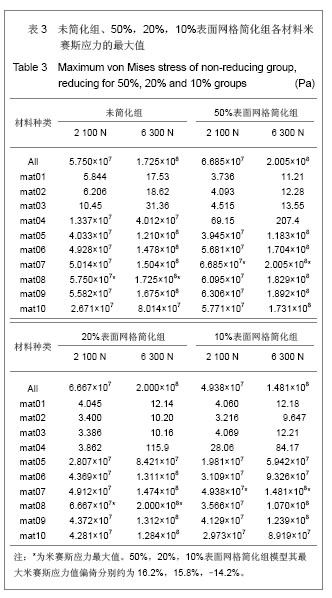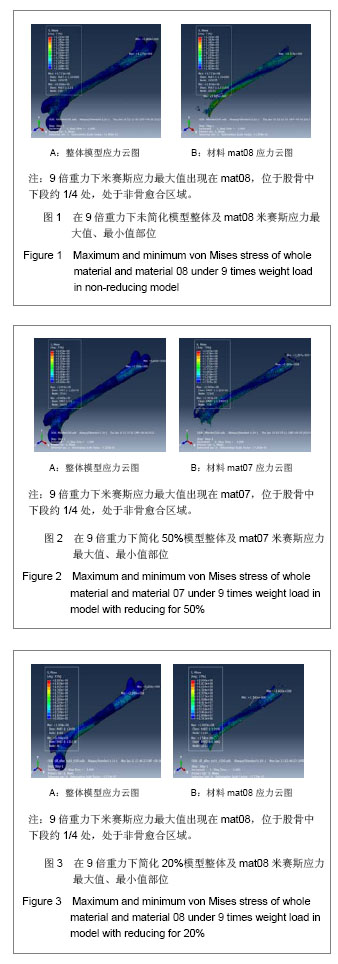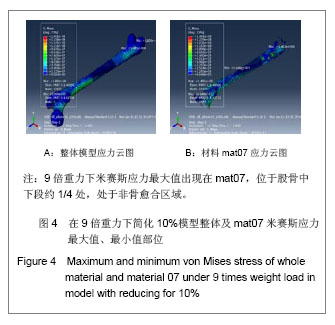| [1]徐云钦,冯水云,梁再跃,等.三种内固定在股骨干骨折中的应用[J].中华创伤骨科杂志, 2002,4(4):316-317.
[2]魏卫,廉红星,张连青.锁定加压接骨板微创治疗下肢长骨干粉碎性骨折[J].中华创伤骨科杂志,2007,9(7):631-633.
[3]宫岩虎,卢延胜,付廷友,等.交锁髓内钉治疗股骨干骨折(附45例报告)[J].中国矫形外科杂志,2005,13(2):109-112.
[4]刘志华,管文浩,檀中奇.基于CT图像构建的腰椎三维有限元模型[J].中国组织工程研究,2012,16(26):4760-4764.
[5]Taylor WR, Roland E, Ploeg H, et al. Determination of orthotropic bone elastic constants using FEA and modal analysis. J Biomech. 2002;35(6):767-773.
[6]Cimerman M, Kristan A. Preoperative planning in pelvic and acetabular surgery: The value of advanced computerised planning modules. Injury. 2007;38:442-449.
[7]扈延龄,金丹,苏秀云,等.基于三维CT数据的髋臼骨折计算机辅助虚拟手术设计[J].中华创伤骨科杂志,2008,10(2):137.
[8]杜长岭,马信龙,马剑雄,等. 利用有限元分析股骨颈骨折内固定术后前倾角变化对股骨近端力学的影响[J].医用生物力学,2012, 27(6):603-607.
[9]Wang JY, Zhang QH, Lupton C,等.个体化骨盆模型的建立、有限元分析及试验验证(上)[J].中华骨科杂志,2010,30(2):222- 224.
[10]Wang JY,Zhang QH,Lupton C,等.个体化骨盆模型的建立、有限元分析及试验验证(下)[J].中华骨科杂志,2010,30(3):318-320.
[11]Ling X,Said R,Young P,et al.基于图像处理的个性化建模:从医学扫描到高精度计算模型的转换[J].医用生物力学,2008, 23(1): 31-36.
[12]樊黎霞,丁光兴,费王华,等.基于CT图像的长管骨有限元材料属性研究及实验验证[J].医用生物力学,2012,27(1):102-108.
[13]杜长岭,马信龙,马剑雄,等. 利用有限元分析股骨颈骨折内固定术后前倾角变化对股骨近端力学的影响[J].医用生物力学,2012, 27(6):603-607.
[14]Lengsfeld M, Schmitt J, Alter P, et al. Comparision of geometry-based and CT voxel-based finite element modelling and experimental validation. Med Eng Phys. 1998;20(7): 515-522.
[15]张国栋,廖维靖,陶胜祥,等.股骨有限元分析附材料属性的方法[J].中国组织工程研究与临床康复,2009,13(43):8436-8441.
[16]张国栋,林海滨,陈宣煌,等. 股骨颈骨折预测的Ansys非线性屈曲分析[J].中华实验外科杂志,2012,29(4):738-740.
[17]王大忠,余正红,周民强,等. 3D膝关节模型的构建[J]. 中国组织工程研究与临床康复,2010,14(48):8945-8949.
[18]王彭,吕洪海,杜智军,等. 儿童股骨三维立体模型的构建[J]. 中国数字医学, 2012,7(7):111-113.
[19]Burkhart TA, Andrews DM, Dunning CE. Finite element modeling mesh quality, energy balance and validation methods: A review with recommendations associated with the modeling of bone tissue. J Biomech. 2013;46(9):1477-1488.
[20]陈纪宝,奚春阳,焦力刚,等. 有限元分析在腰椎生物力学应用中的研究与进展[J]. 中国组织工程研究,2012,16(26):4908-4912.
[21]Lin D,Li D, Li W, et al. Dental implant induced bone remodeling and associated algorithms. J Mech Behav Biomed Mater. 2009;2(5):410-432.
[22]李小康,郭征,刘继鹏. 低弹性模量接骨板固定股骨干骨折的有限元分析[J].中华创伤骨科杂志,2010,12(12):1164-1168.
[23]张先龙,王小平,喻鑫罡,等.主动负重和被动加载时骨折局部动力学环境的比较研究[J],中华创伤骨科杂志,2007,9(3): 258-262.
[24]申华,陈国振,王建国.振动应力下兔尺骨及骨痂的三维有限元应力与振动分析[J].中国生物医学工程学报,2001,20(2): 182-186.
[25]Steiner M, Claes L, Simon U, et al. A computational method for determining tissue material properites in ovine fracture calluses using electronic speckle pattern interferometry and finite element analysis. Med Eng Phys. 2012;34(10): 1521-1525.
[26]Vetter A, Liu Y, Witt F, et al. The mechanical heterogeneity of the hard callus influences local tissue strains during bone healing: afinite element study based on sheep experiments. J Biomech. 2011;44(3):517-523.
[27]史俊. 实验性兔下颌骨骨折愈合过程的研究——生物力学仿真模型的建立[D]. 上海交通大学医学院,2006.
[28]Weis JA, Granero- Moltó F, Myers TJ, et al. Comparison of microCT and an inverse finite element approach for biomechanical analysis: results in amesenchymal stem cell therapeutic system for fracture healing. J Biomech. 2012; 45(12):2164-2170.
[29]Zeng ZL, Cheng LM, Zhu R, et al. Building an effective nonlinear three-dimensional finite-element model of human thoracolumbar spine. Chin J Orth. 2011;91(31): 2176-2180.
[30]Sitthiseripraip K, Van Oosterwyck H, Vander Solten J, et al. Finite element study of trochanteric gamma nail for trochanteric fracture. Med Eng Phys. 2003;25(2):99-106. |
